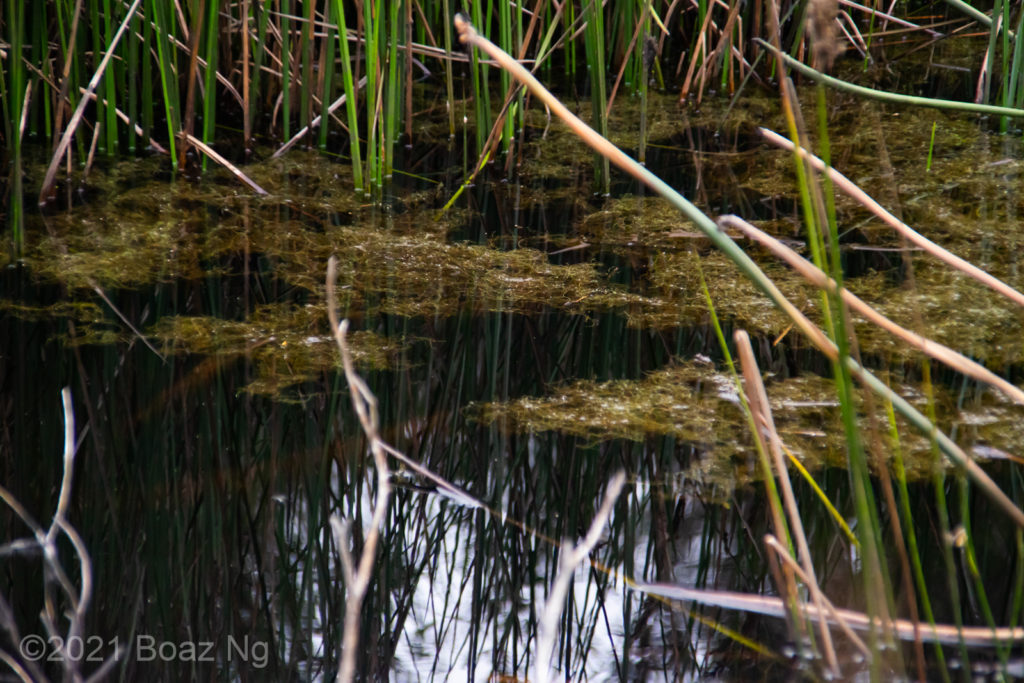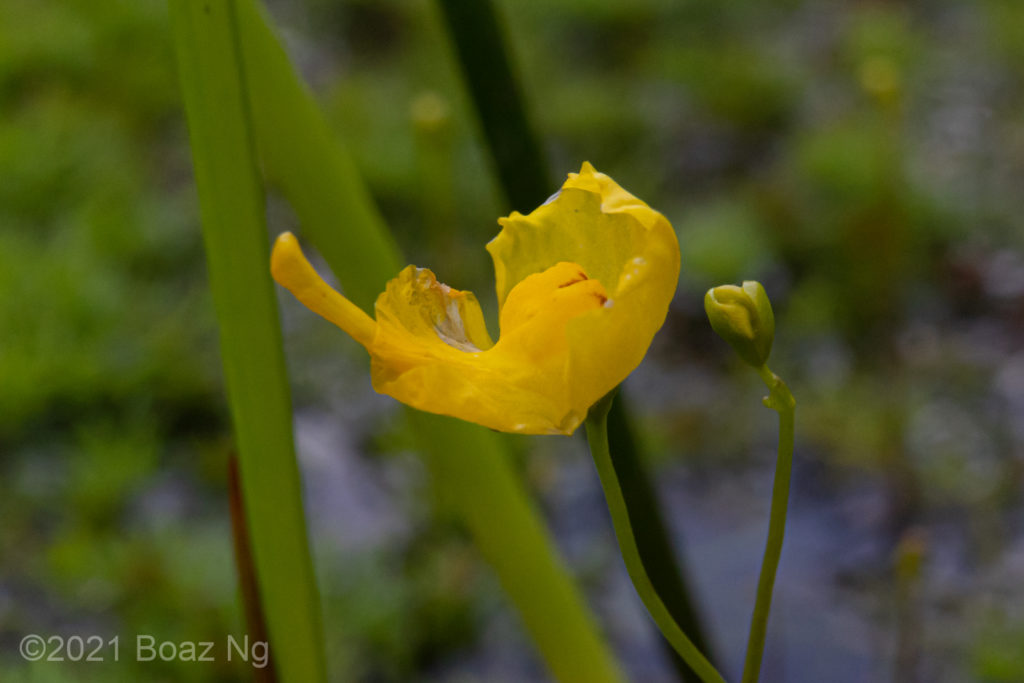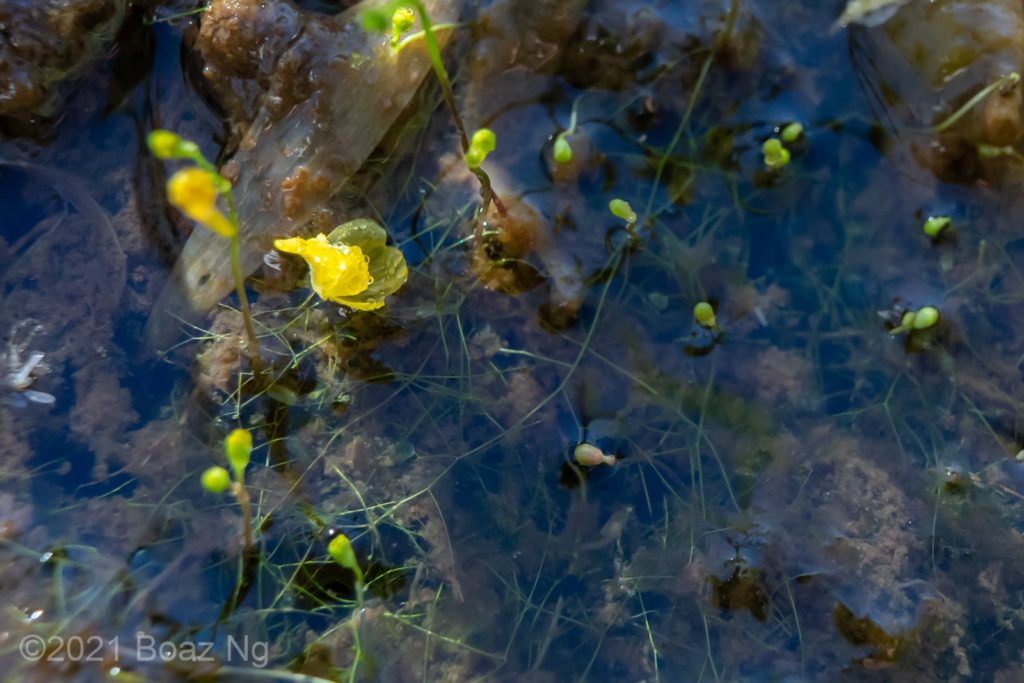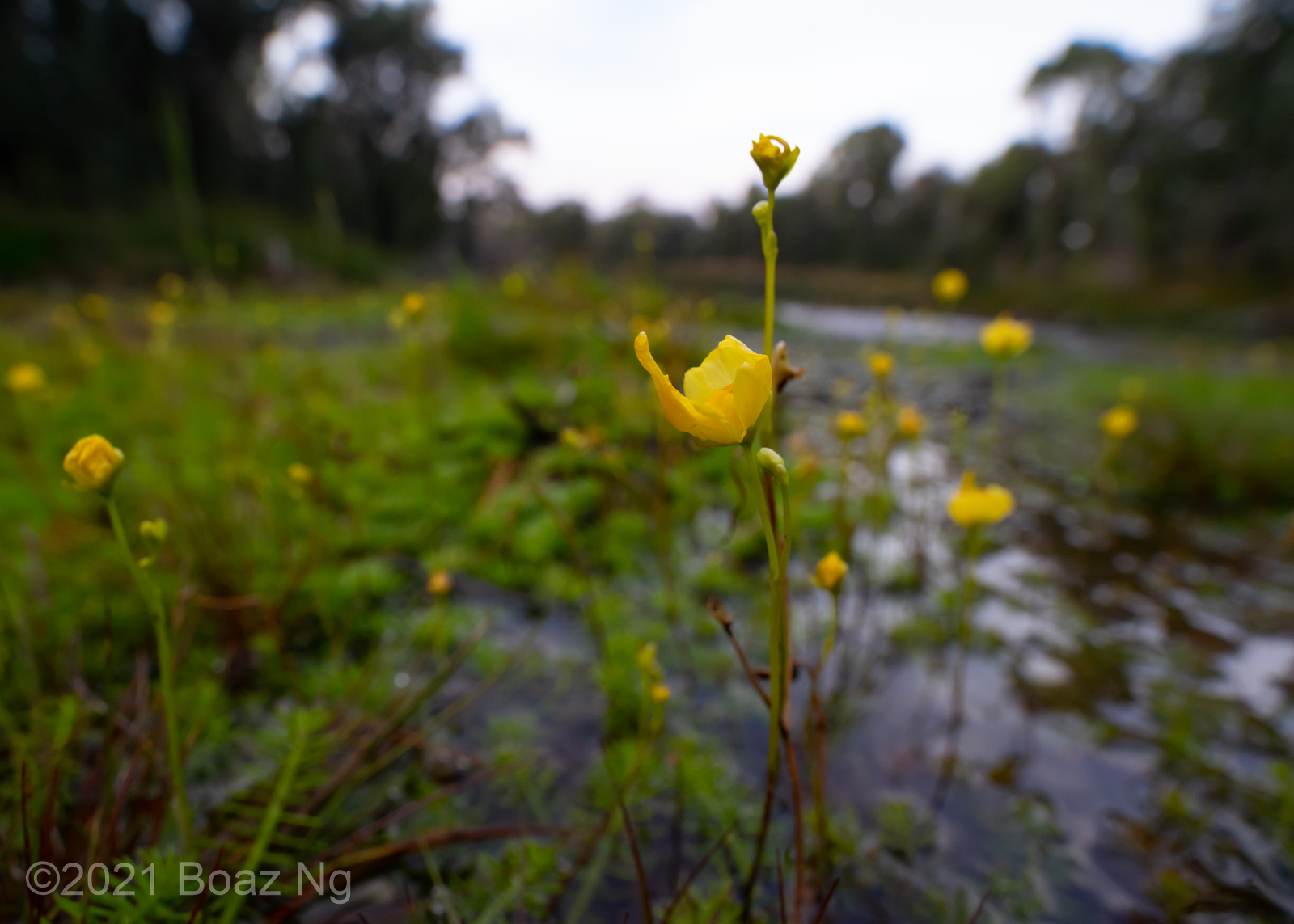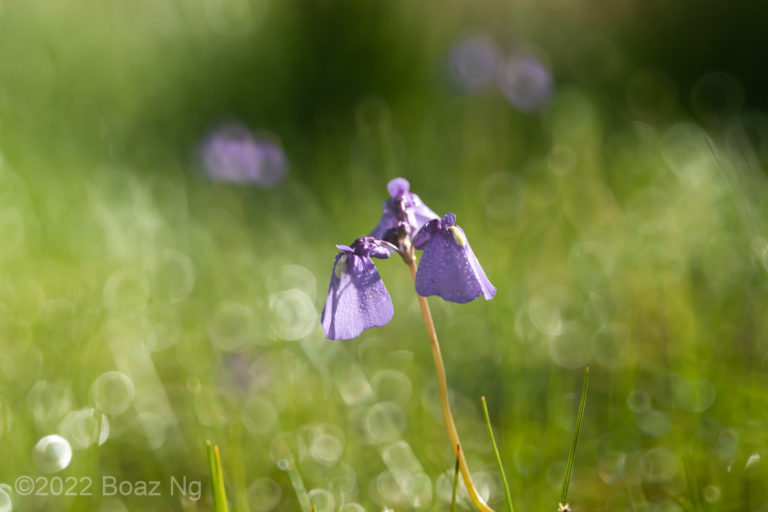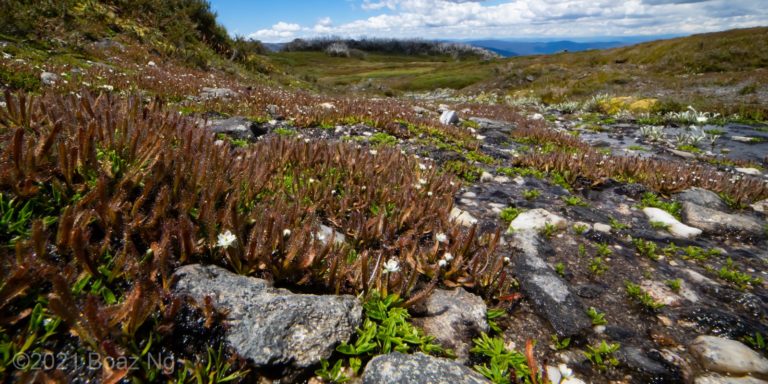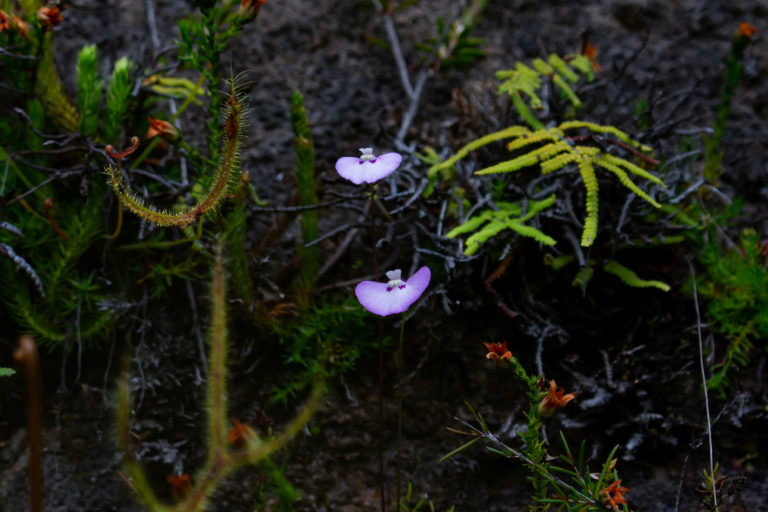U. gibba is an aquatic bladderwort with a global distribution. In Australia, it is mainly found along the coast of northern and eastern Australia.
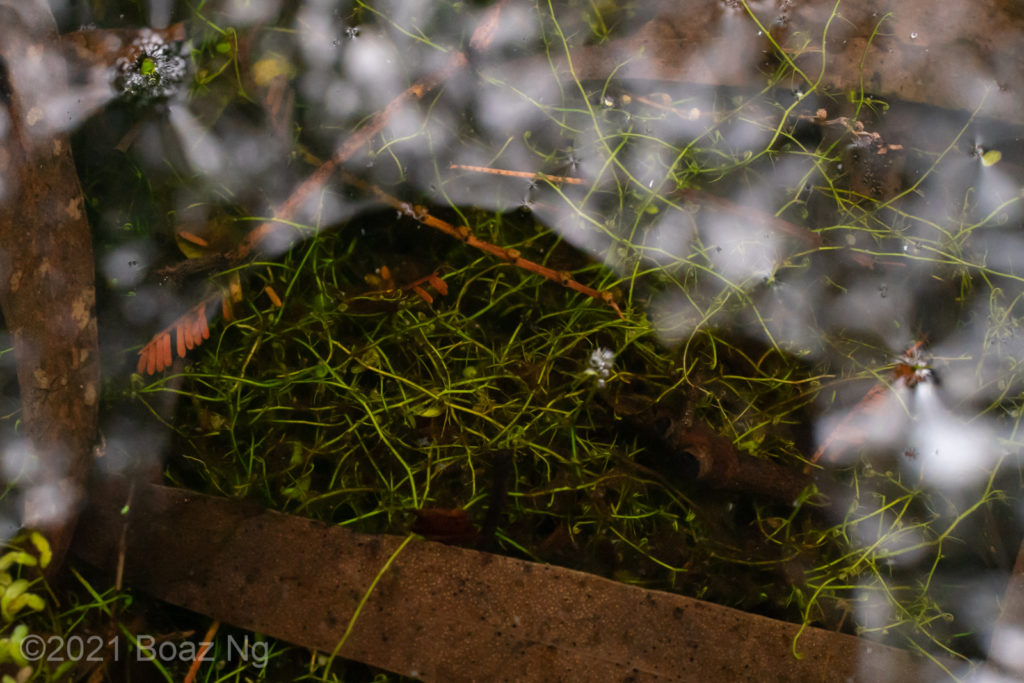
U. gibba is recognisable by the morphology of its foliage, which mostly consists of a simple main stolon with thread like side branches at regular intervals that generally fork once or twice. Small bladders are borne on these branches. The plants often grow as thick tangled mats.
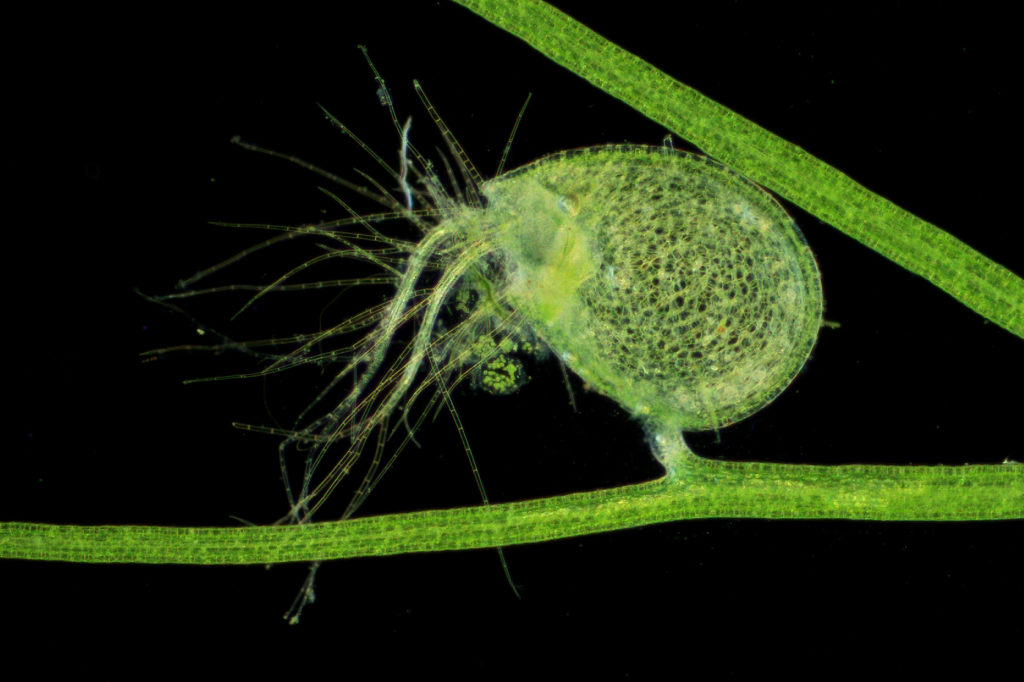
The blooms of the species are bright yellow. The upper corolla lip is larger than the lower corolla lip and flares forwards to form a slightly cupped shape. The lower corolla lip is also flaring. The palate region of the lower is inflated to a prominent bulb with red markings for which the species is named. The spur is long and pointed forwards. Under certain conditions, the species forms cleistogamous flowers, which are buds that don’t open and are self-pollinating.
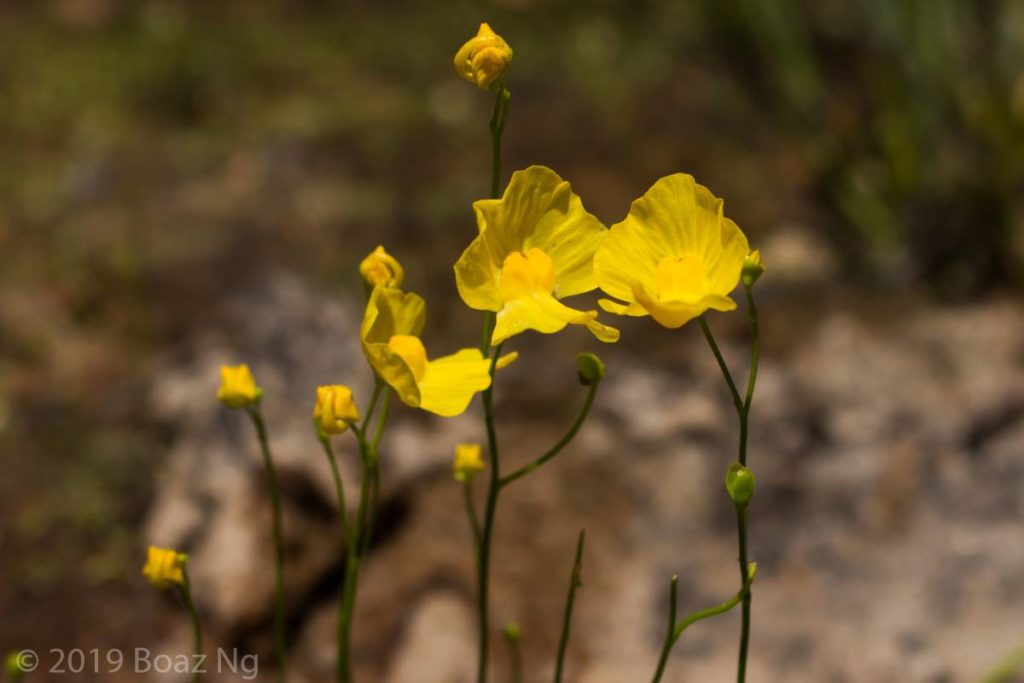
U. gibba has a broad distribution mainly around warmer coastal regions of Australia. The species has a preference for still or slowly moving water and can be found in dams, swamps and calm sections of creeks. The species grows as an aquatic and accumulates where the stolons can tangle around surrounding vegetation. Oftentimes, the stolons grow as large tangled masses. Flowering is triggered during the height of summer, especially as the water level receeds and the foliage is stranded above water (although it flowers fine in permanent water bodies too).
